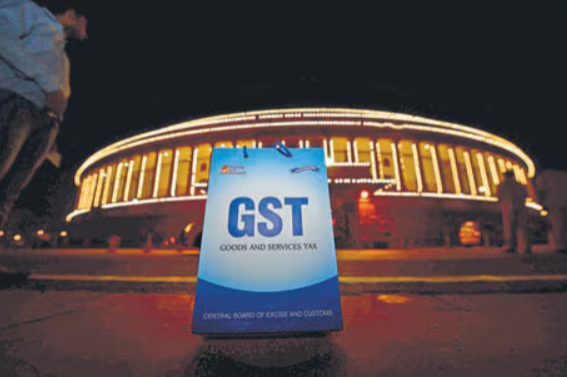Goods and Services Tax (GST) revenue in May neared ₹1.73 lakh crore, the fifth highest monthly collection since the new indirect tax regime started in July 2017 mainly driven by economic buoyancy, sustained domestic demand and stricter compliance, indicating robust first quarter growth after record collections of ₹2.10 lakh crore in April.

The gross GST revenue in the month of May saw a 10% year-on-year growth to ₹1,72,739 crore. After accounting for refunds, the net revenue for May was ₹1.44 lakh crore, reflecting a growth of 6.9% compared to the same period last year, the finance ministry said in a statement .
With the highest ever collection in the first month of FY25, total gross GST revenue in the first two months of current financial year is ₹3,83,006 crore, “an impressive 11.3% year-on-year growth”, mainly driven by a strong increase in domestic transactions, the ministry added. After accounting for refunds, the net GST revenue in the 2024-25 till May 2024 stood at ₹3.36 lakh crore, reflecting a growth of 11.6% compared to the same period last year, the ministry said. Thus, average gross GST collection in the first two months of FY25 crossed ₹1.91 lakh crore.
Experts said the collections of ₹2.10 lakh crore in April was exceptional because it reflected the impact of the fiscal year-end . But, the ₹1.73 lakh crore revenue collection in the following month signifies ₹1.70 lakh crore in the new normal in FY25, they added. GST collection data for a particular month reflect actual business transactions made in the previous month.
Deloitte India partner MS Mani said: “These collections, which relate to supply of goods and services transactions in April 24, for which GST has been paid in May 24, indicate the beginning of a new normal in excess of ₹1.7 trillion in FY25 compared to ₹1.6 trillion during FY24. This is line with the recent GDP estimates which indicate a robust economy, which does not appear to have been impacted much either by the election season or the heat wave across the country.”
The monthly GST collection data, one of the high frequency indicators of the economy’s health, came close on the heels of the National Statistical Office’s (NSO) projection on Friday that India’s gross domestic product (GDP) grew at 8.2% in 2023-24, higher than what was estimated by both the government and private forecasters. The estimate also accompanied by a lower-than-expected fiscal deficit of 5.6% for FY24 against the 5.8% envisaged in the interim budget presented on February 1, 2024.
Giving breakdown of the May collections, the finance ministry said that the contribution of central GST (CGST) in the month was ₹32,409 crore, state GST (SGST) was ₹40,265 crore and integrated GST (IGST) was ₹87,781 crore, which included ₹39,879 crore collected on imported goods. The compensation cess collection in May was ₹12,284 crore. IGST is levied on interstate transfer of goods and services and is shared between the Centre and the state. Cess is levied on luxury goods and sin products such as liquor, cigarettes, other tobacco products, aerated water, automobiles, and coal. While states have no claim on compensation from July 1, 2022, the cess continues till March 31, 2026 to service the back-to-back loans availed by states when compensation cess collection fell in 2020 and 2021 because of a slump in economic activities due to the Covid-19 pandemic.
Pratik Jain, partner at PwC India said that the “GST collection is broadly in line with expectations on the back of a huge growth in April 24. It’s interesting to see in few states such as Delhi, Haryana and Punjab, growth over last year (May 23) is much higher than average growth. It would be interesting to analyse the reasons for this difference and see what needs to be done from tax administration point of view.”


